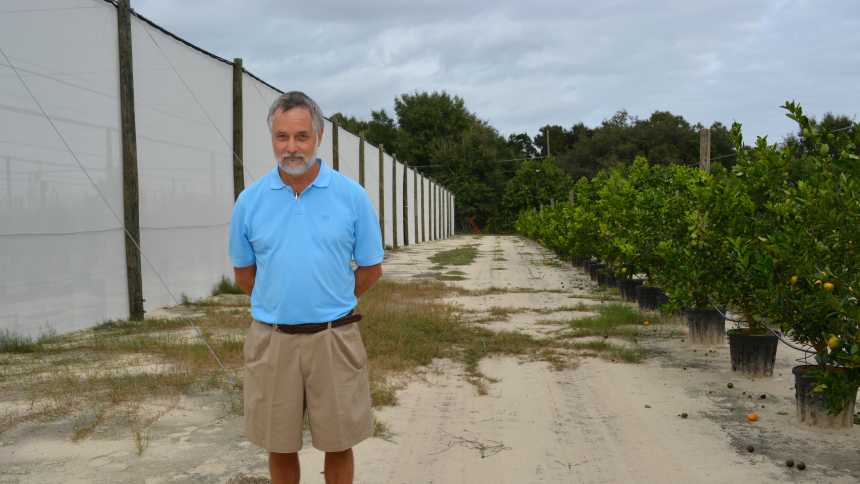Research Team Takes On Inside Job to Protect Grapefruit

UF/IFAS Professor Arnold Schumann is among those leading the charge to test growing citrus under protective screen structures.
Photo by Frank Giles
Florida’s grapefruit industry, soured over the last decade by citrus greening, might be seeking shelter and finding new hope inside white-mesh shadehouses thanks to a $3.5 million grant from USDA to the University of Florida. Studies for the grant will take place inside and outside these protected agriculture structures in Ft. Pierce, FL, where 512 young ‘Ray Ruby’ grapefruit trees already have been in production since September 2013.
The project will be focusing on growing and protecting high-quality fresh grapefruit inside 14-feet-high screenhouses. Growing citrus under protective screen (CUPS) shields the crop from the Asian citrus psyllid, the vector of citrus greening.
“The primary purpose of growing citrus under screen is to exclude psyllids and therefore block transmission of the bacterial agent of HLB disease,” said Arnold Schumann, UF/IFAS Professor and project director. “A major goal of the grant is to develop a sustainable integrated growing system for fresh market citrus, customized for the modified environment in CUPS.”
According to Schumann, main research topics include integrated pest and disease management, automated robotic pest scouting, canopy management adapted for CUPS, advanced fertigation, selective light spectrum enhancement, rootstock and scion evaluation, and comprehensive economic analysis. Grant documents also indicate selective canopy management, sensor-based irrigation, suitable varieties, rootstocks to boost yields will be vetted.
In addition to UF/IFAS CUPS endeavors, the project will support new CUPS research in California, to be located at the Lindcove Research and Education Center of the University of California.
Nine scientists and Extension agents will work together to complete the grant objectives. Six collaborators represent Florida; there are two in California, and one in Australia.










